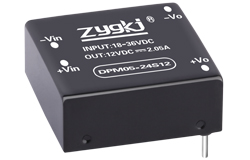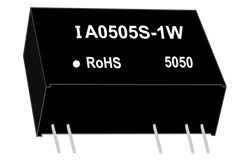ข่าว
Designing an AC-DC Converter Circuit: A Step-by-Step Guide
Author: ZYG Power Module Time: 2023-5-8
Introduction
An AC-DC converter circuit is an electrical circuit that is used to convert alternating current (AC) to direct current (DC) voltage. This converter circuit is commonly used in electronic devices such as computers, televisions, and audio equipment. The AC-DC converter circuit design can be complex, and it requires a good understanding of electronic circuits, components, and their properties. In this article, we will provide a step-by-step guide to designing an AC-DC converter circuit.
Step 1: Determine the Required Voltage and Current
The first step in designing an AC-DC converter circuit is to determine the required voltage and current for your application. This will depend on the electronic device that you are designing the circuit for. For example, a computer power supply requires a voltage of 12V DC and a current of 5A.
Step 2: Choose the Rectifier Circuit
The next step is to choose the rectifier circuit that will be used to convert the AC voltage to DC voltage. The rectifier circuit is made up of diodes that allow current to flow in one direction only. There are two types of rectifier circuits: half-wave and full-wave. The half-wave rectifier circuit is simpler, but it provides a lower DC output voltage. The full-wave rectifier circuit provides a higher DC output voltage and is more efficient.
Step 3: Select the Capacitor
The capacitor is used to smooth out the DC voltage after it has been rectified. The capacitor should be chosen based on the required voltage and current of the circuit. A larger capacitor will provide a smoother DC voltage but will also be more expensive.

Step 4: Choose the Transformer
The transformer is used to step down the AC voltage to a lower voltage that can be rectified. The transformer should be chosen based on the required voltage and current of the circuit. The transformer should also be rated for the required power output.
Step 5: Choose the Voltage Regulator
The voltage regulator is used to regulate the DC voltage to a constant voltage. There are two types of voltage regulators: linear and switching. Linear regulators are simpler but less efficient, while switching regulators are more complex but more efficient.
Step 6: Design the Circuit
Once you have chosen all the components, you can start designing the circuit. The circuit should be designed to meet the required voltage and current specifications. The circuit should also be designed to be safe and reliable.
Step 7: Build and Test the Circuit
After designing the circuit, you should build the circuit and test it to ensure that it meets the required specifications. You should also test the circuit for safety and reliability.
Conclusion
Designing an AC-DC converter circuit can be a complex process, but it is essential for many electronic devices. By following the steps outlined in this article, you can design an AC-DC converter circuit that meets the required voltage and current specifications. Remember to choose the components carefully and test the circuit for safety and reliability.
ข้อมูลที่เกี่ยวข้อง
-
2023-12-6
Fully Modular Power Supply: The Ultimate Solution for Custom Cable Management
Cable management is an essential aspect of building a clean and organized computer system. Messy cables not only obstruct airflow and make maintenance difficult but also give an unprofessional and cluttered appearance. In recent years, the demand for custom cable management has increased, leading to the development of fully modular power supplies. These power supplies offer the ultimate solution for custom cable management, allowing users to create a sleek and efficient system tailored to their needs. What is a Fully Modular Power Supply? A fully modular power supply is a type of computer power supply that allows users to detach and connect cables as needed. Unlike non-modular power supplies, where all cables are permanently attached, fully modular power supplies feature...
ดูรายละเอียด -
2023-7-12
Exploring the Advantages and Applications of Bidirectional DC-DC Converters
Introduction: Bidirectional DC-DC converters are a vital component in modern power systems as they enable power flow in both directions, allowing the transfer of energy between different voltage domains. These converters have gained significant attention due to their numerous advantages and wide range of applications. In this article, we will explore the advantages of bidirectional DC-DC converters and discuss their applications in various fields. Advantages of Bidirectional DC-DC Converters: 1. Power Flow Control: Bidirectional DC-DC converters provide the flexibility to control the power flow between two voltage domains. This feature is particularly useful in energy storage systems, where power needs to be efficiently transferred between the storage device and the load. 2. Energy Efficiency: These converters are highly efficient as...
ดูรายละเอียด -
2023-5-13
AC-DC Converter: Converting Alternating Current to Direct Current
An AC-DC converter is an electronic device that is used to convert alternating current (AC) to direct current (DC). In today\'s world, most electronic devices operate on DC power, which is why AC-DC converters are so important. They are used in a wide variety of applications, from power supplies for computers and televisions to battery chargers for smartphones and tablets. The basic principle behind an AC-DC converter is to convert the AC input voltage into a DC output voltage. This is done using a rectifier circuit, which is made up of one or more diodes that allow current to flow in only one direction. The rectifier circuit converts the AC voltage into a pulsating DC voltage, which is not suitable...
ดูรายละเอียด -
2023-5-19
AC-DC Switching Power Supply – A Comprehensive Guide
AC-DC switching power supplies are widely used in modern electronic devices. They convert the incoming alternating current (AC) from the power source into direct current (DC) that is required for the operation of electronic devices. These power supplies are known for their high efficiency, reliability and small size. This comprehensive guide will help you understand the basics of how switch-mode power supplies work, their applications, various types, and key parameters to consider in selecting the right one for your requirements. How do AC-DC Switching Power Supplies work? An AC-DC switching power supply works by applying a high-frequency AC input voltage (approx. 50 kHz to several MHz) to a transformer, which steps down the voltage. A bridge rectifier then converts this...
ดูรายละเอียด -
2023-5-2
AC-DC Converter Module: The Key to Efficient Power Conversion
AC-DC converter modules are crucial elements in the world of power electronics. They are devices that convert alternating current (AC) power into direct current (DC) power, which is necessary for powering electronic devices such as computers, mobile phones, and home appliances. AC-DC converter modules are widely used in various applications, ranging from power supplies for consumer electronics to industrial power systems. The importance of AC-DC converter modules lies in their ability to efficiently convert AC power into DC power. The efficiency of the conversion process is crucial as it affects the amount of power that is lost during the conversion. The higher the efficiency of the converter, the lower the amount of power that is wasted as heat, and the...
ดูรายละเอียด -
2023-4-14
AC-DC Converter: Converting Alternating Current to Direct Current
An AC-DC converter, also known as a rectifier, is an electronic device that is used to convert alternating current (AC) to direct current (DC). It is an essential component in many electronic devices, as most devices require DC voltage to operate. The process of converting AC to DC involves the use of diodes, which are electronic devices that allow current to flow in only one direction. The AC voltage is fed into the input of the converter, which contains a series of diodes that are arranged in a specific configuration. This configuration determines the voltage and current characteristics of the output DC voltage. The simplest form of an AC-DC converter is a half-wave rectifier, which consists of a single diode...
ดูรายละเอียด


















